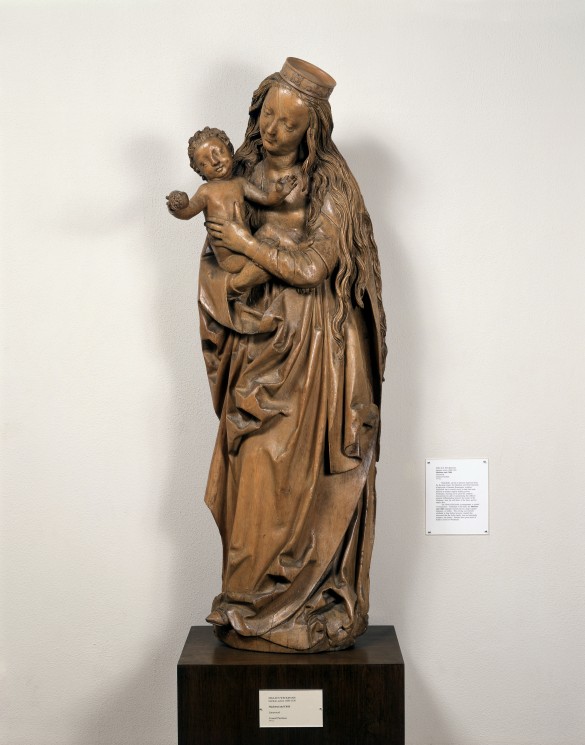
AP.1979.2.1- Madonna and Child, Nicklaus Weckmann the Elder, c. 1490-1500.
By Angela Gonzalez, Curatorial Intern
Nicklaus Weckmann the Elder was an active artist in Germany between 1481- 1526. He was the leading sculptor in the town of Ulm. In 1481, he was granted citizenship to the city and was listed on the register of names as “Nicklaus Weckmann, sculptor, the elder.” His workshop produced numerous sculptural programs for churches throughout southwestern Germany.
The Madonna and Child is sculpted three-fourths of the way around, with a hollow back. This sculpture was originally part of a large winged retable or altarpiece. Highly carved altarpieces would serve as an illustration to Biblical narratives and aided those who could not read. They were adequately named, “Bibles of the illiterate.” Weckmann depicts Mary in a naturalistic manner, with a relaxed pose as she gazes down to the Christ child she is cradling. The Christ child is animated, reaching towards the viewer. In his hand, he holds a pomegranate which is a Christian symbol of fertility and eternity.
Many of the altarpieces of this time period would be painted in order to depict fine detail. However, Weckmann allows the natural beauty of the limewood to beam through. The absence of paint also illustrates how skilled Weckmann was at this carving. This is evident in the cascading hair of Mary, the folds of her robe and especially her facial expression. Limewood is not only pleasing to the eye, but it is said to have held holy powers which would help to scare away the plague.


